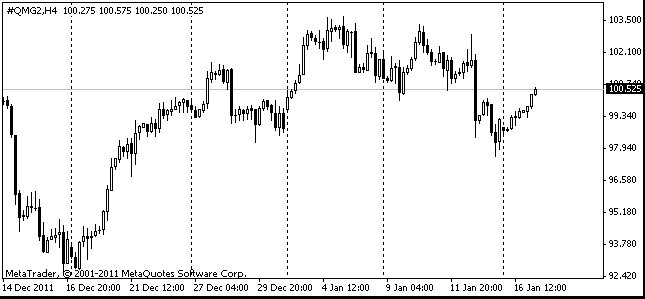EUR/usd
Friday passed under the sign of correction, during which the dollar recouped some of the losses it had suffered in the antirally earlier in the week. From the technical viewpoint, over the last five weeks the pair has been in the uptrend. The major issue the markets are concerned about has been “frozen” till September, though already at the end of this week the attention of the markets will be riveted on Bernnake's speech. In fact, behind all this technical stuff unfairly little attention is paid to the current fundamental news. According to the PMI reports the production has been on the decline for a long time, and so far the general economic level has been satisfactory due to the service sector. But in summer even this indicator has sunk, going below 50 in Germany and, as a result, dragging down the index for the whole euro zone. The consumer confidence also looks shattered, hitting the post-crisis lows. The only sliver of light for the euro zone is a favourable trade balance. Earlier the region was also notable for an equilibrium balance of trade (the growing exports from Germany were compensated by the increasing imports in the peripheral countries). Now Germany keeps doing pretty well in this sphere. Besides, there are no signs of deterioration in other parts of the euro zone. The cheap euro plays in the hands of exporters. Yet we can't but mention the decrease in the demand for the imported goods because of the tough austerity in the troubled countries. Unlike Britain and the USA the euro zone didn't suffer a chronic deficit in good times, so in hard ones the region may expect that the lower rate of the euro will improve the competitiveness of the EU goods and boost their selling. In this respect we can understand why the European politicians don't hurry to settle the issues – they still hope that at some point the situation will turn in their favour and improve the economies. But here they seem to underestimate the risk of uncertainty. Meanwhile, it is exactly because of the uncertainty that investments into the local production are getting smaller and that small businesses cannot obtain loans, especially in the troubled states, where the need for them is particularly great.

GBP/USD
The British pound didn't feel very well on Friday. The short-interval charts clearly show how bears attacked the pound, from time to time pushing it down to new lows. As a result, from the Thursday high of 1.5916 GBP/USD fell down to 1.58. This morning we could observe some attempts to push the pair lower, but since Britain celebrates Summer Bank Holiday today the activity in the pair is low and will probably remain that all through day. As for other crosses, here our views on the British currency are rather pessimistic as the economy is so far in the recession, which since the end of the previous year has been only worsening from quarter to quarter. The second half of the year promises to be more favourable, but it is nothing but a forecast. The current statistics show that affairs in the region still leave much to be desired.

USD/JPY
The growth of USD/JPY stopped at 79.65, but no further decline followed. The yen again consolidated near the levels of the previous support – below 78.50. Though the break through the 200-day MA turned out to be false, the further move down will hardly occur, in our opinion, as on the one hand it will be prevented by the Japanese Ministry of Finance and on the other hand it will be deterred by the global inflation growth, which leads to the higher spread of yields between most government bonds and their Japanese counterparts.

oil
Oil has been the first to recover from the correction we saw at the end of the previous week. Already today WTI has gone above 97 and brent is worth a bit less than $115 now. It's very likely that Oil still has the potential to grow, with Brent going above 120 and WTI climbing above $105-$110. At higher prices the commodity will suffer a strong pressure from the USA, as this run of events will be adverse for the rating of the current government. The above-mentioned levels have a fair chance to become the cyclic maximums for the next half-year or year.
